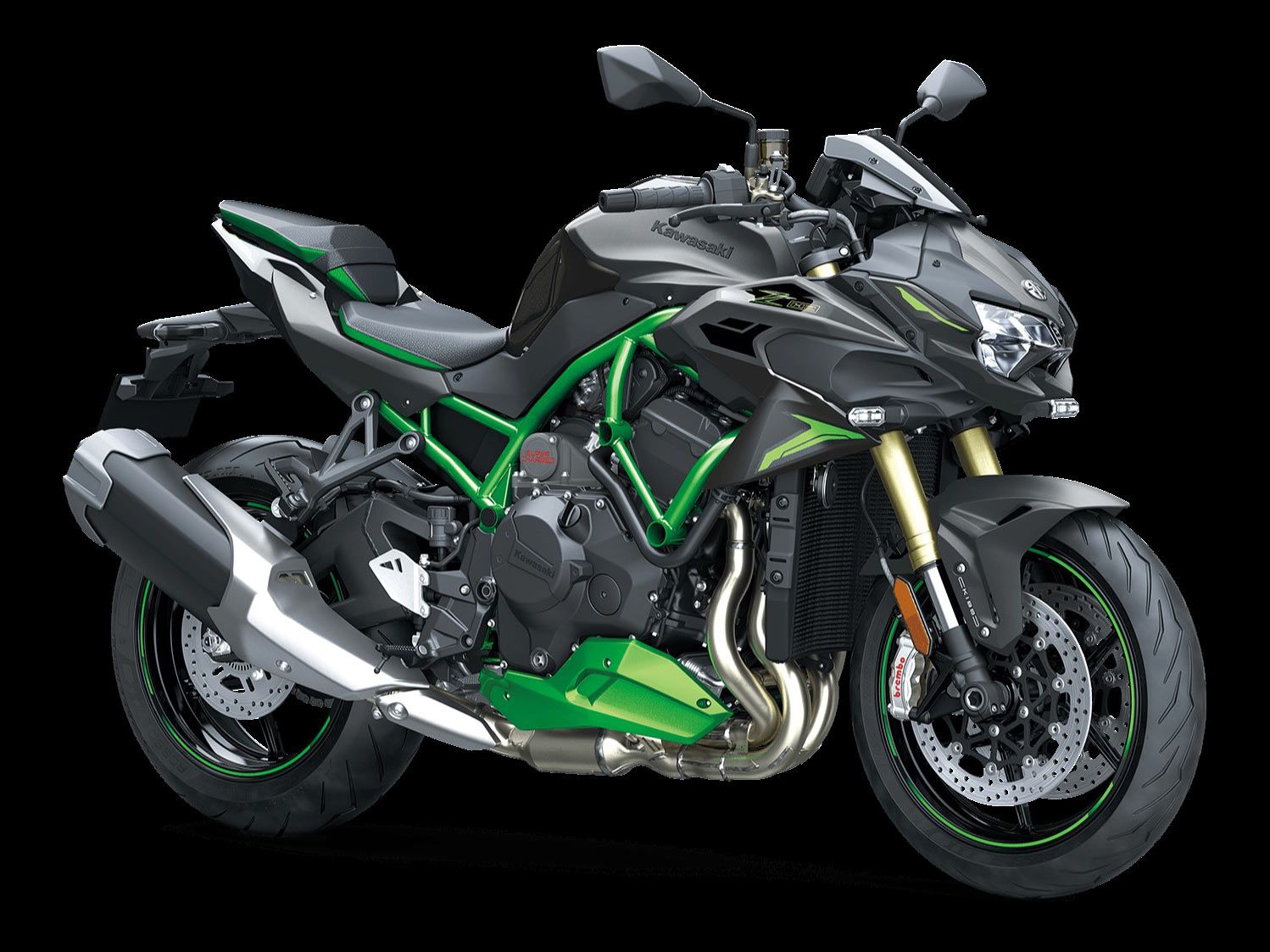
Ups
- Torque “curve” like Uluru
- Surprisingly affordable for a bike that will draw so much attention
- High-end components even for the base model justify the price; you’re not just paying for the supercharged engine. The SE version adds even more toys
Downs
- Styling is even busier than other Kawasaki models, with too many disconnected shapes and a massive, odd-looking exhaust
- It’s no lightweight at around 530 pounds
- Inevitable wind blast on such a fast naked bike; fuel consumption can be crazy if you use all the performance
Verdict
You know we’re living in incredible times when a bike with 197 certified horsepower (167 at the wheel during our tests) and a supercharged 998cc four-cylinder engine isn’t even in the top 10 most powerful bikes on the market. But although the Z H2 doesn’t breach the 200 hp barrier, its use of forced induction to achieve its performance means it’s a different experience altogether compared to its high-revving rivals.
The performance experience is just as jaw dropping as the supercharged specs suggest, regardless of the actual numbers. But what’s perhaps most remarkable is that the Z H2 somehow manages to be a usable day-to-day machine. As we head toward the twilight of the internal combustion era, it could well turn out to be a future collectable classic, just as big two-strokes of the ‘70s and ‘80s are in strong demand today.
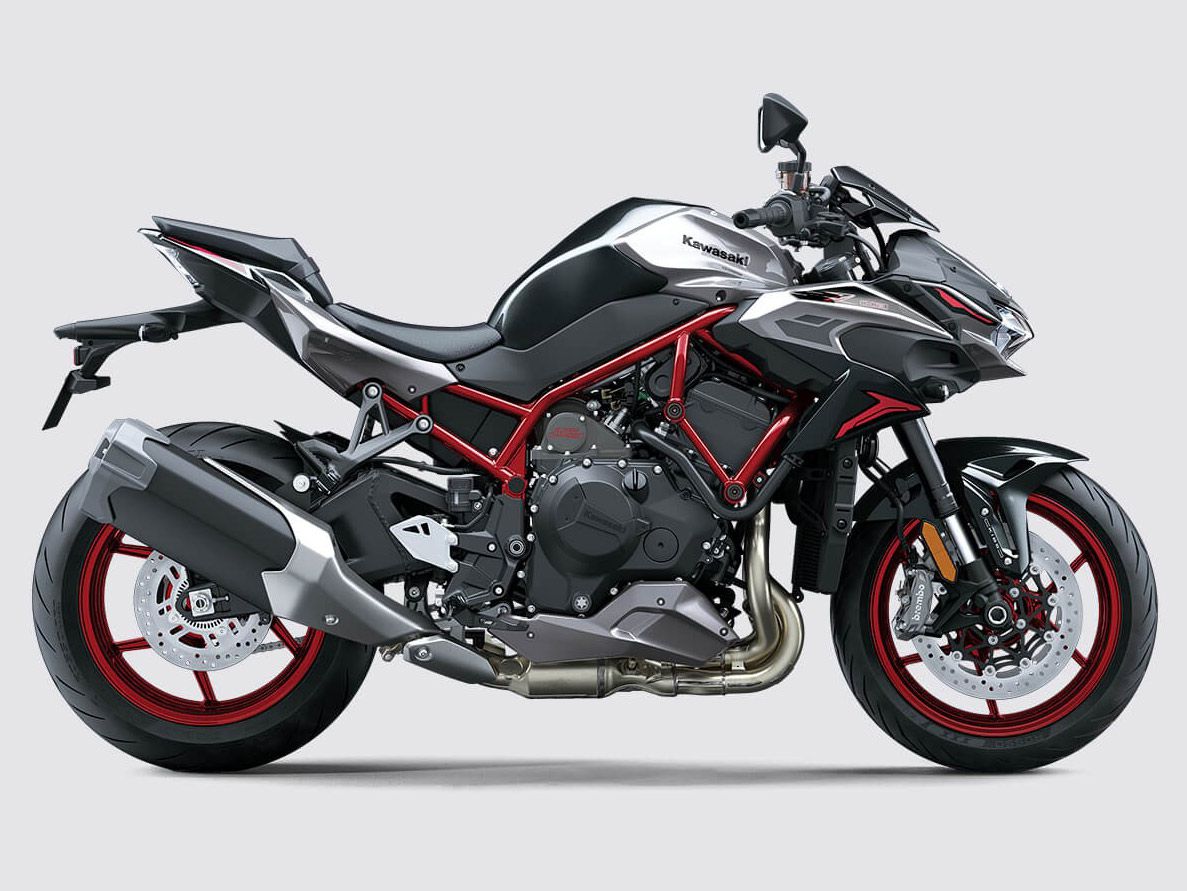
Overview
Kawasaki first revealed its intention to create a range of supercharged four-cylinder bikes back in 2013, when a prototype H2 engine was the centerpiece of the firm’s stand at the Tokyo Motor Show, although by that stage rumors of the project were already circulating; patents for a supercharged Kawasaki had been appearing for several years. Twelve months later, the Ninja H2 superbike and its even madder 310 hp track-only H2R sibling were revealed, with deliveries starting in 2015.
At the end of 2015, Kawasaki dropped hints of additional supercharged models by showing drawings of the “SC-01 Spirit Charger” and “SC-02 Soul Charger,” one half-faired, the other naked. It also showed off a new Balanced Supercharged Engine derived from the H2′s design but aimed less at outright power and more at torque. In 2018, the Balanced Supercharged Engine found a home in the new H2 SX sport-tourer, a bike that was arguably loosely derived from the SC-01 designs. For 2020, the same motor found a home in the Z H2, which took its cues from the SC-02 Soul Charger.
By then, the original Ninja H2′s power had been raised to 228 hp from its original 197 hp, making space for the newer, cheaper machines to step in at that sub-200 hp power point. For 2021, the Z H2 SE was added to Kawasaki’s lineup, taking the base Z H2 and slotting KECS computer-controlled damping into the Showa fork and shock.
Updates for 2023
Paintwork aside, the Z H2 and Z H2 SE haven’t been altered since their introduction. Given that the COVID-19 pandemic struck just as the original Z H2 hit the market, drying up supply chains and sales with effects that are still being dealt with today, they’re still a rare enough sight on the street to guarantee a second glance.
Pricing and Variants
The base Z H2 will set you back $18,500 and comes only in Metallic Phantom Silver/Metallic Carbon Gray with a red trellis frame and wheels in 2023. The Z H2 SE is $20,700 and also comes in just one color scheme, Metallic Matte Graphenesteel Gray/Ebony/Mirror Coated Black, with black wheels and a green frame and graphics. The SE also adds Kawasaki Electronic Control Suspension (KECS) with Showa Skyhook EERA technology, Brembo Stylema front calipers, and stainless steel braided brake lines.
Competition
If you’re stuck on the idea of a supercharger, then there’s nothing to compete with the Z H2 outside of its sister H2 models in the Kawasaki range or the frighteningly expensive Bimota Tesi H2 using the same engine. However, the options for powerful naked bikes have expanded considerably over the last couple of years, with Ducati’s Streetfighter V4, V4 S, and V4 SP setting the bar at 205 hp from its 1,103cc V-4 engine, a figure that’s matched by MV Agusta’s Brutale 1000 RR, Brutale 1000 RS, and Rush.
Step down a power class to the 170–180 hp region and the market grows; KTM’s 1290 Super Duke R, Triumph’s Speed Triple 1200, and Aprilia’s Tuono V4 all sit here, as well as the EBR 1190SX, with BMW’s S 1000 R falling just a fraction behind them in terms of outright grunt. Meanwhile, buyers who want the Z H2 for its combination of vast torque and unique engineering might also be tempted by the likes of Triumph’s 2.5-liter 180 hp Rocket 3 R.
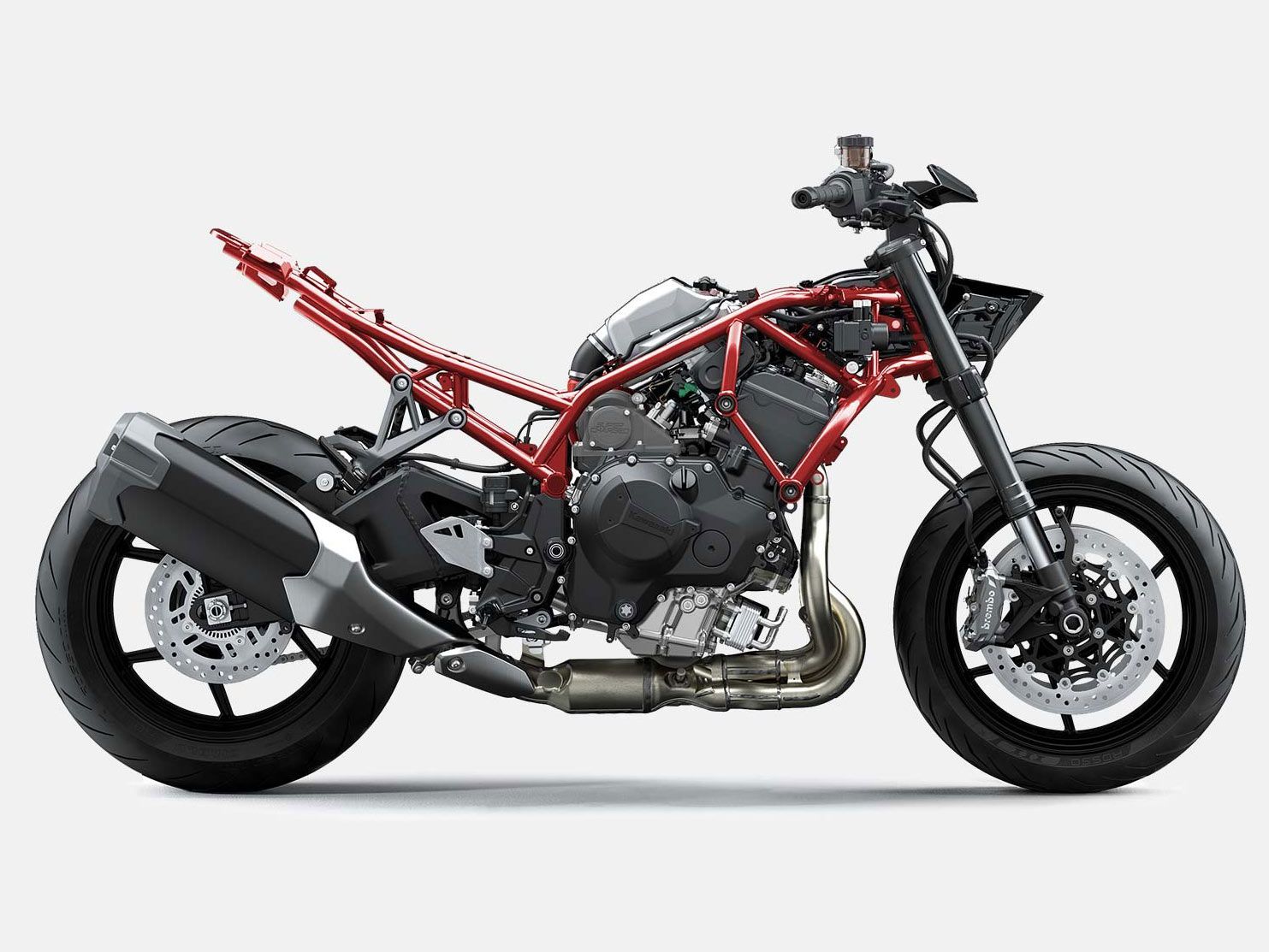
Powertrain: Engine, Transmission, and Performance
The main draw of the Z H2 is inevitably that supercharger, spinning at 110,000 rpm and forcing more air into the 998cc four-cylinder engine than it would otherwise be able to inhale. Essentially that means it behaves like a larger-capacity motor. There’s a slight hesitation on initial throttle openings, but after that the flow of torque and power is enough to allow wheelies on demand and sub-10 quarter-mile times. That power, all 197 hp at 10,500 rpm and 101 lb.-ft. at 8,500 rpm according to Kawasaki’s spec sheet, or 167.2 hp at 10,580 rpm and 87.6 lb.-ft. at 8,560 on the CW dyno, travels through an assist-and-slipper clutch to a quickshift-aided six-speed transmission.
Testing the Z H2 SE for Cycle World, Doug Toland said: “To say it ‘peaks’ may actually be a bit misleading; the H2 has an almost electric torque feel starting from 2,000 rpm and basically adds 20 hp with every 1,000 rpm.”
Handling
Whether you opt for the base Z H2 or the semi-active damped Z H2 SE, you’re buying a high-spec set of suspension components. It shows in the way the bike hides its mass (529 pounds for the base model, 531 pounds for the SE). It’s not a track-focused machine, but with so much power on tap, the stability of the chassis is a blessing. It also means that while the Z H2 can be a top-rate adrenaline pump when required, there’s a sensible side that lets it swallow miles without leaving your nerves frayed at the end of every journey.
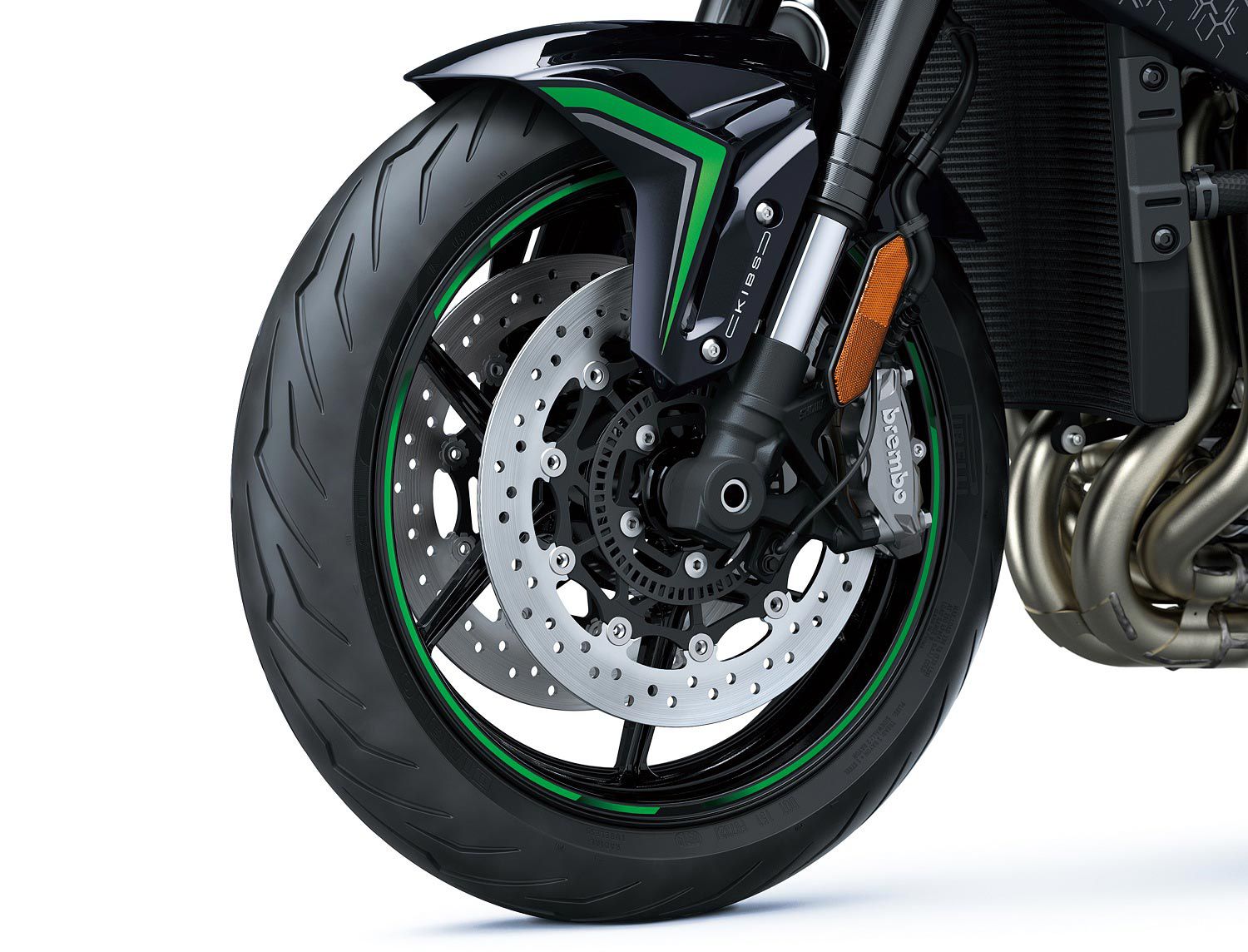
Brakes
Like the suspension, Kawasaki hasn’t cheaped-out on the Z H2′s brakes. Brembo M4.32 Monoblock calipers grab 320mm front discs, assisted by Kawasaki’s KIBS antilock system, which monitors brake pressure, wheel speed, throttle position, clutch position, and gear to optimize the level of braking provided, limiting rear wheel lift, and helping to make any intervention by the ABS to be less intrusive. The front brake is very strong with good feel to the point of ABS intervention, at which point the rider loses some feel but no stopping power, unless the ABS fully takes over to avoid what it determines to be impending wheel lockup.
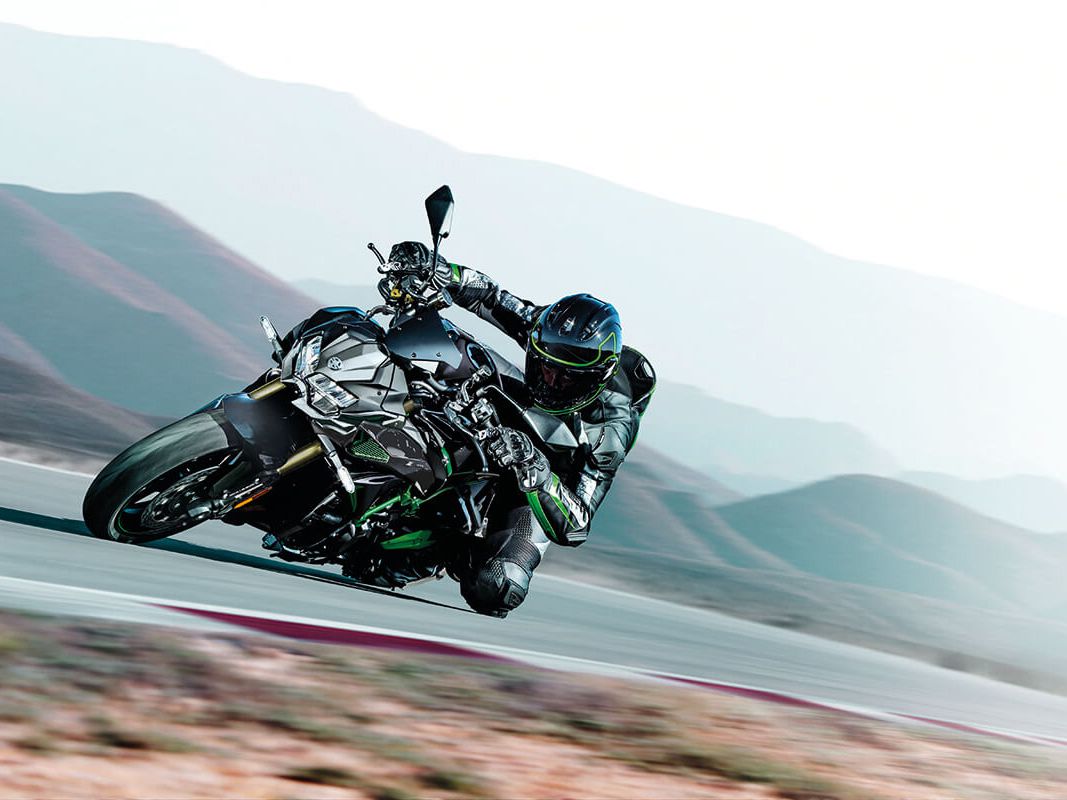
Fuel Economy and Real-World MPG
During testing we managed 40–45 mpg on the freeway and 28–30 mpg on more involving roads. With a 5-gallon tank, that means 150–200 miles per tank is possible depending on how brutal you are with the throttle. But, as Doug Toland discovered, you don’t get to use all that supercharged performance for free. He wrote, “The H2 can devour gasoline at an alarming rate if you spend a lot of time deep in boost. I once saw 7—that’s seven—mpg.”
Ergonomics: Comfort and Utility
There may be superbikes that offer even more performance than the Z H2, but chances are you’ll crawl off them after a day’s riding with a back like Quasimodo. That’s where another of the Kawasaki’s strengths shines through as it’s a surprisingly comfortable, roomy machine. “Vibration is surprisingly low despite a high-rpm blower, seat comfort is surprisingly high even after many 200-mile days, and seat-to-footpeg distance is good and generous; I never touched a footpeg (or anything else) to the ground,” said Cycle World’s test. “The rider triangle is pretty comfortable and well proportioned; the only noticeable quibble was that the passenger seat seemed a little close for my 5-foot-10 frame at times.”
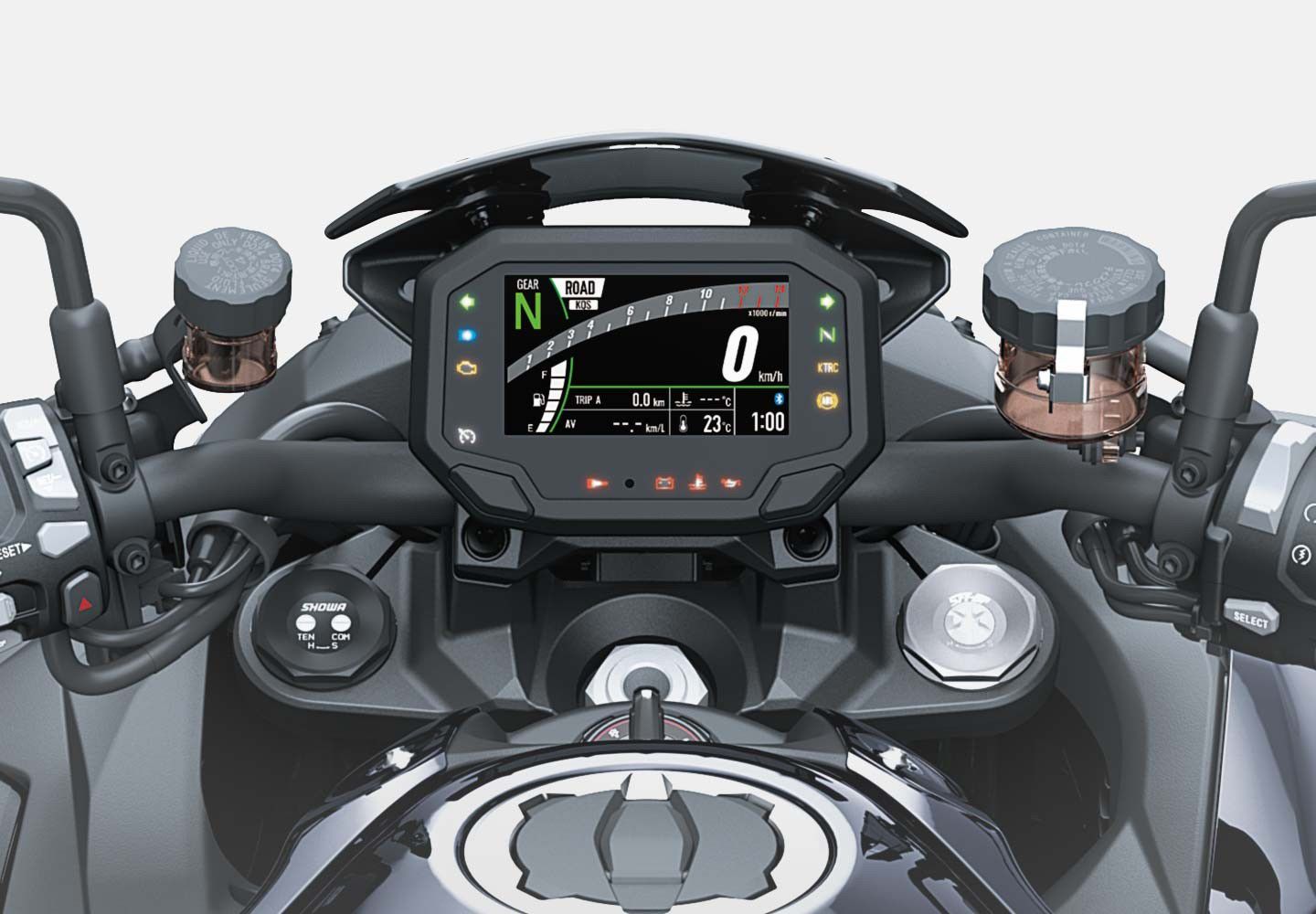
Electronics
Although not quite as packed with electrickery as the Ninja H2 SX SE, Kawasaki’s first radar-assisted motorcycle, the Z H2 and Z H2 SE aren’t short of toys. Both versions get cruise control, launch control, traction control, and ABS with an IMU-assisted Kawasaki Cornering Management Function (KCMF) that assists braking and acceleration in turns, multiple riding modes, smartphone connectivity, and a standard up-and-down quickshifter. On top of that, the Z H2 SE gains Kawasaki’s KECS semi-active damping, using a Skyhook algorithm to alter the suspension settings as you ride and adding multiple modes for different conditions.
Warranty and Maintenance Coverage
A one-year, transferrable, unlimited-mileage warranty is standard, with the option of Kawasaki Protection Plus to extend it.
Quality
All the H2 bikes are Kawasaki’s flagship models, and their build and spec reflect that. The Z H2 lacks some of the top line elements offered on the Ninja H2, such as self-healing paint, but it’s still at the apex of the firm’s quality.
2023 Kawasaki Z H2/Z H2 SE Claimed Specifications
| MSRP: | $18,500/$20,700 |
|---|---|
| Engine: | 998cc, DOHC, liquid-cooled inline-four w/ supercharger; 16 valves |
| Bore x Stroke: | 76.0 x 55.0mm |
| Transmission/Final Drive: | 6-speed/chain; quickshifter |
| Fuel Delivery: | Fuel injection w/ 40mm throttle bodies |
| Clutch: | Wet, assist-and-slipper clutch; hydraulic actuation |
| Engine Management/Ignition: | TCBI w/ Digital Advance |
| Frame: | Trellis steel chassis |
| Front Suspension: | Showa 43mm SFF-BP fork, compression, rebound and preload adjustable (KECS semi-active damping adjustment on Z H2 SE); 4.7 in. travel |
| Rear Suspension: | Uni-Trak Showa gas shock, compression, rebound and preload adjustable (KECS semi-active damping adjustment on Z H2 SE); 5.3 in. travel |
| Front Brake: | 4-piston Brembo M4.32 calipers, dual 320mm discs w/ ABS (Brembo Stylema on Z H2 SE) |
| Rear Brake: | 1-piston caliper, 260mm disc w/ ABS |
| Wheels, Front/Rear: | Aluminum, 17-inch |
| Tires, Front/Rear: | 120/70-17 / 190/55-17 |
| Rake/Trail: | 24.9°/4.1in. |
| Wheelbase: | 57.3 in. |
| Ground Clearance: | 5.5 in. |
| Seat Height: | 32.7 in. |
| Fuel Capacity: | 5.0 gal. |
| Wet Weight: | 529 lb. / 531 lb. |
| Contact: | kawasaki.com |
Source: MotorCyclistOnline.com
